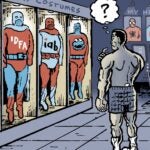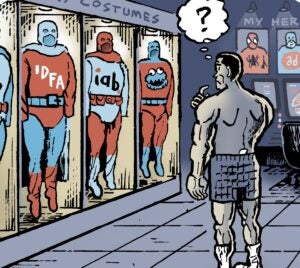 Comcast’s acquisition Thursday of video ad serving platform FreeWheel generated numerous questions, the most common being: What does this mean for the future of Pay TV and digital video ecosystem?
Comcast’s acquisition Thursday of video ad serving platform FreeWheel generated numerous questions, the most common being: What does this mean for the future of Pay TV and digital video ecosystem?
Beyond anticipating the convergence of linear TV and digital video ad dollars, there’s still tremendous fragmentation between the worlds of the television operator and programmer, the video ad server and content management platform and the third-party video ad network or exchange.
Who Owns The Content?
Emerging digital video solutions promise to deliver audience-based targeting for advertisers. But for the most part, premium TV content is still owned and sold directly through the major broadcast companies – like CBS, NBC, ABC and FOX – using technologies like FreeWheel or Auditude/Adobe Primetime (which NBC Sports uses) to facilitate cross-platform video ad insertions.
“Broadcasters don’t use third-party ad networks or public exchanges to sell that premium content,” said Nick Troiano, president of BlackArrow, a company that helps operators and multichannel video programming distributors (MVPDs) like Comcast, Time Warner Cable and Bright House, monetize their content. “A lot of content for premium advertising online [runs through] Hulu or direct-to-consumer on a network site. All other video is broken out between YouTube, which takes about 75% of it and then everyone else.”
Certainly some TV ad dollars flow into audience addressable channels like online video, but Troiano estimates it’s a small shift at present.
“What people are focused on is how do you bring programmatic or more efficient solutions to the TV-buying process. And that is the $72 billion market everyone is after,” Troiano said. “There are companies in the market that talk about bringing exchange-like solutions to live television, so technically it is feasible.”
However, working out the business model is another complication. “[Ad exchanges] are not really touching any of the content,” he claims. “The inventory these exchanges would ultimately access would come from either the Pay TV operator or the programmer and it would usually be on-demand inventory.”
“Gunning For That TV Dollar”
The different infrastructure used by IP-based video versus traditional cable systems presents challenges as the two worlds collide, said Jim Nail, principal analyst at Forrester Research.
“FreeWheel seems to have gotten itself nicely embedded in with the TV guys, and Adap.tv and any other online video player wants to enter that because that’s where the money is,” he said. “The battle is engaged. We’ll see if FreeWheel can defend its current space and with an ally like Comcast. That certainly helps them maintain and grow their current position. But everybody’s gunning for that TV dollar.”
Unfortunately, defining “TV ad dollar” is cloudy. The budgets are shifting between the linear broadcast stream, network sites and applications, video-on-demand, and streaming audiences. As advertisers plan for multi-platform campaigns compatible with tablet or Roku experiences, an additional layer of complexity emerges.
“As a service provider, to support each device, you have different siloes,” Troiano said. “FreeWheel is very much ‘broadband TV everywhere.’ FreeWheel is like a DoubleClick campaign management tool for video and display for the programming side. We’re on the operator side of all the consolidation.”
Television infrastructure is complex and is vastly different than the world of digital, which is why there is still debate around automation. Ultimately the TV world will adopt best-in-class solutions that facilitate cross-platform buys, Troiano predicted.
Comcast, a BlackArrow customer, is very focused on VOD, for example. Time Warner Cable, another customer of BlackArrow’s, is very focused on multi-screen TV. Other customers have a focus on network DVR. “We’re trying to design a suite of products where it doesn’t matter where you start,” he said. “We want to make it where if you start with one platform, you can consolidate into others.”
An Advertiser-Friendly Future
Comcast’s recent moves are understandable when one takes into account it’s planning for a world where traditional TV timeslots and geographies matter less than mastery over cross-platform content distribution.
Time Warner Cable will give Comcast better scale and clout on carriage deals with programmers. As Comcast develops large-scale on-demand libraries, FreeWheel’s technology, which spans both ad-insertion and content licensing and rights management, will essentially help Comcast manage and monetize programmer content in all distribution channels.
“Everyone knows the industry is moving toward a time-shifted world and everyone is concerned about the DVR,” Troiano said. “If you look at the Pay TV industry, VOD is kind of the replacement strategy for DVR because VOD is a better advertiser friendly environment.”
Underscoring this shift, Disney and DISH Network this week cut a content distribution deal that included DISH’s agreement to disable its AutoHop technology on viewer-recorded content for three days following the initial broadcast. Features that let consumers skip ads had been a source of dispute and litigation between DISH and big broadcasters.
“All ecosystem participants are starting to change,” Troiano said. “Nielsen is changing, programmers and Pay TV operators are changing, and agencies are changing. GroupM, for instance, launched addressable TV agency Modi and Michael Bologna who leads that sits on our board. I think everyone is realizing we need to move forward.”














